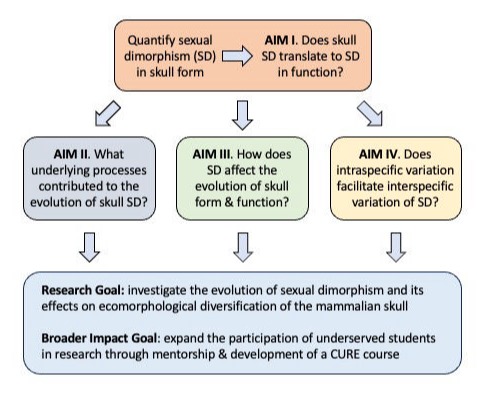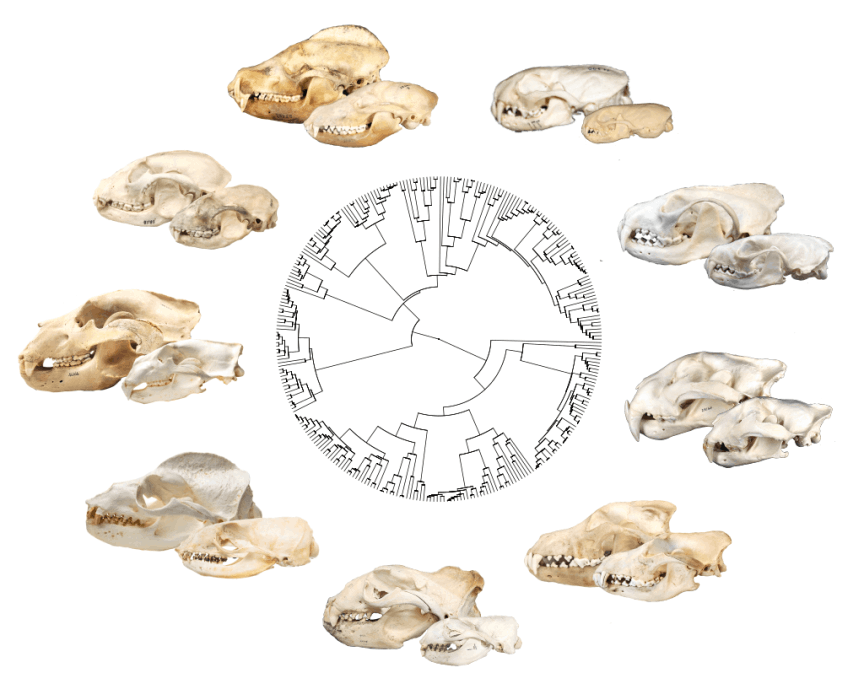As the primary feeding apparatus, the skull serves as a trophic morphology that is tightly linked to dietary variation and thus an ideal model to investigate the relationships between sexual dimorphism, ecomorphology, and phenotypic diversification. This project has four aims:
AIM I. Determine if and how sexually dimorphic morphologies translate to intersexual differences in the structural mechanics, performances, and biomechanics of the skull using lever mechanics and finite element analyses.
AIM II. Test how sexual selection, niche divergence, and other factors influence the evolution of sexual dimorphism of the morphological and functional traits.
AIM III. Examine how intraspecific variation produced by sexual dimorphism influences the diversity, tempo, and mode of skull evolution.
AIM IV. Test how static allometry contributes to the degree of sexual dimorphism within species and the evolutionary allometry of sexual dimorphism across the clade.

